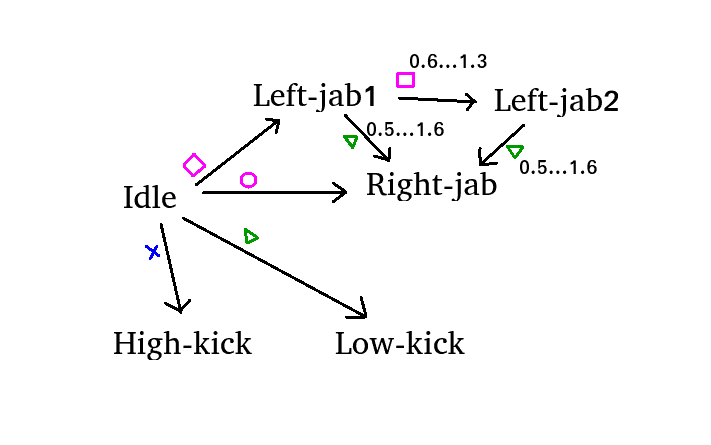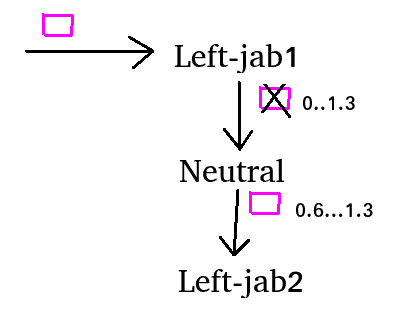I would just reorganize the structure template to improve the wanted algorithm.
I'll try to improve(suggest a better) graphs.
7 hours ago, Dante3085 said:
Example: I push square and the Character performs a "Left-Jab". After that, for a short amount of time (the time window), I have the opportunity to press square again, so that the Character performs a "Strong-Jab". If I fail to press square again during that short amount of time, the Character returns to his initial state.Do you mean a specific programming problem ? My basic problem is just finding satisfying model that can easily be translated into an implementation (basically high level pseudocode). Other than that, I am not shure what you mean.
You are not being specific enough, at least what regards me. I can't give you some advice without knowing what you need advice on.
A problem here means a problematic inside a project - you present to us what are you trying to do currently...
Quote
Fighting Game Combo/Input System (Looking for Feedback)
Impressive: you are making a fighter game. But it's a bit hard to understand if the game is 2D or partly 3D, graphics-level,...
Basically, you're looking for feedback - but towards what? The combo system? Input system? Both(combo/input system)?
And e.g. what would you need to improve/add-to your combo system? Better graphs? Better combos? Better structure? More variety?
Better first graph?
Well my question was basically, if you need advice anyways: Do you keep ComboNode objects per-character? Or just random papers?
This is probably your personal stuff, so I'll try to be more specific.
Why do you keep a ComboStateMachine per each combo? Shouldn't a StateMachine actually represent combo making "machine" instead making one per a specific combo?
I mean you already have a combo tree per each character. But why so many ComboStateMachine-s?
What I'd suggest would be something like:
class ComboStateMachine
{
CharacterType char_type_check;
//check all of the given character type combos
};
This would omit loading entire nodes for each combo.
If I got you correctly, you are doing something like:
class ComboNode
{
int combo[5];
//ie. 1= triangle, 2=circle, 3= cross, 4 = rectangle
};
class Character
{
ComboNode per_character[20];
};
I think there should be no minimum timer (like 600 ms), but none (0 ms) as you can't quite measure exact player reflexes, even a good exemplary average would be just an estimation of a required minimum time.
Also if you're trying to make timed combos, not the player does not the exact numbers and even in your case when you do, it's hard to hit the actual time. As it is not in seconds, but fraction-ed ones.
Quote
By the way thumbs up for making a PS 4 game in C++  I didn't know SMFL supports the PS 4 platform.
I didn't know SMFL supports the PS 4 platform.









